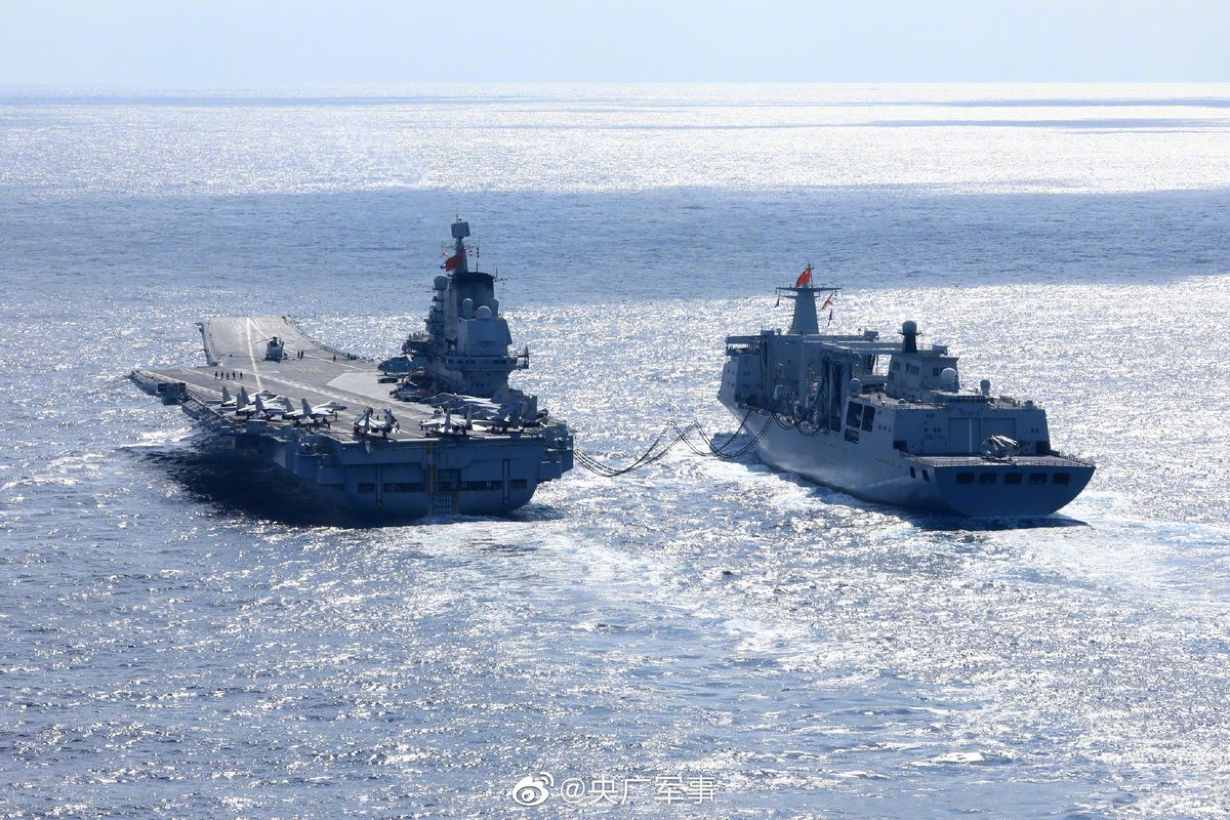Historic! China’s All 3 Aircraft Carriers “Roar” In Indo-Pacific At Same Time Amid Tensions With US-Backed Philippines – Reports

China’s naval might was on full display this month when, in a historic first, all three of the People’s Liberation Army Navy’s (PLAN) aircraft carriers were at sea simultaneously.
This was pointed out by journalist and Indo-Pacific watcher Ian Ellis Jones, who collated and published data on the positions of the three carriers—Liaoning, Shandong, and Fujian—earlier this month.
Satellite imagery revealed that the three carriers were at sea on September 18. The move to place all three carriers at sea at the same time is the first instance since the PLAN was established about 97 years ago.
Of the three carriers, Liaoning and Shandong are already operational and expanding their reach to the Western Pacific, while the newest carrier, Fujian, is currently undergoing testing. The Fujian aircraft carrier has reportedly completed four sets of sea trials.
AfriPrime App link: FREE to download...
https://www.amazon.com/Africircle-AfriPrime/dp/B0D2M3F2JT
A week ago, the Shandong carrier strike group was operating off the coast of Hainan Island, while the Liaoning strike group was in the Philippine Sea. The Fujian had sailed for its latest sea trials from the Jiangnan shipyard in Shanghai. As of September 22, Fujian has returned to port after successful sea trials.
Once Fujian enters service, most likely in 2025, China is expected to possess the second largest fleet of aircraft carriers after the United States, with 11 operational flattops.
China’s third and most advanced “super-carrier,” Fujian, has an electromagnetic catapult system, making it the second navy after the US to have this technology.
Chinese carriers have had quite a few busy weeks. According to Ellis’s data, the Shandong carrier was deployed to the Western Pacific in July and August. The Liaoning aircraft carrier entered the region on September 17-18, sailing between Japan’s westernmost island of Yonaguni and nearby Iriomote, entering the country’s “contiguous zone.”

Notably, the carrier group sailed within just 100 miles of Taiwan. The incident triggered a row between Japan and China, the two Asian giants.
The recent simultaneous deployment, albeit short-lived, represents a significant achievement for the People’s Liberation Army Navy, which has been consistently striving to assert its naval influence in the Indo-Pacific region. China has previously deployed two operational aircraft carriers simultaneously. However, such deployments have lately become routine.
Moreover, the simultaneous deployments offer a compelling picture of the PLAN’s growing capabilities and influence, particularly concerning its aircraft carrier fleet. This is noteworthy in light of the escalating tensions in the region and the concurrent enhancement of China’s shipbuilding and naval capabilities.
AfriPrime App link: FREE to download...
https://www.amazon.com/Africircle-AfriPrime/dp/B0D2M3F2JT
The PLAN is expected to have six carriers on active duty by 2035.
Additionally, there are speculations that the fourth Type 004 carrier, supposedly under construction, will feature nuclear propulsion. That advancement would transform the nation’s navy to a genuine blue-water navy, enabling Beijing to access distant oceans.
Military experts suggest that the frequent deployments of Chinese carriers are intended to strengthen China’s influence in a region characterized by multiple territorial conflicts with neighboring countries. A prominent illustration of this is the South China Sea, where tensions have recently escalated between China and the Philippines, a US ally.
Interestingly, there is an indication that the Liaoning aircraft carrier and the US Navy’s USS Theodore Roosevelt were operating in or around the Philippines Sea recently as the US carrier left port in the Middle East and entered the region for its scheduled deployment.
Chinese & US Carriers Operating Close To The Philippines
On September 23, Ellis published another infographic suggesting that the Liaoning and the USS Theodore Roosevelt strike groups were “converging & operating in a similar area east of the Philippines.” The data was based on satellite imagery sourced from OSINT researcher @MT_Anderson on X.
After eight months of deployment, the USS Theodore Roosevelt left the Middle East on September 12.
“Following a period of dual carrier coverage by the Theodore Roosevelt, CSG, and the Abraham Lincoln, CSG in the CENTCOM region, Theodore Roosevelt has departed and begun its transit into the Indo-Pacific command area of operations,” Maj Gen. Pat Ryder said.

The deployment of USS Theodore Roosevelt to the region came following discussions about the US Navy’s carrier shortage, particularly highlighted by the absence of a US carrier in the Indo-Pacific at the end of last month. The Seventh Fleet of the US Navy was left without a carrier when the USS Abraham Lincoln was reassigned to the Fifth Fleet.
About a month ago, military observers lamented the absence of a carrier as it coincided with rising tensions between China and the Philippines and enhanced military activity by the Chinese forces in the Taiwan Strait. The United States relies heavily on aircraft carriers to project power and implement its foreign policy, considering them a crucial component of its national security strategy.
However, the close operation of US and Chinese carriers near the Philippines is also highly symbolic, as it happened in the wake of China’s sustained hostility against Manila.
China claims the entire South China Sea as its sovereign territory, making the region a major flashpoint. In recent times, there have been numerous conflicts between China and the Philippines, with the Chinese Coast Guard ships ramming, obstructing, and firing water cannons at Philippine vessels.
China’s deployment of an aircraft carrier near the Philippines has been perceived as a warning to the country and its allies in the region.
The PLAN sees its expanding carrier fleet as a tool for projecting power beyond China’s shores. This includes the crucial First Island Chain, which is made up of archipelagos that border mainland East Asia and stretch from the southernmost point of the Japanese islands to the South China Sea, and the Second Island Chain, which stretches farther into the Western Pacific and includes Guam and other U.S. island territories in the Marianas.
China’s aircraft carriers are fueling those ambitions, and analysts believe that we can expect more simultaneous carrier deployments by the PLAN in the future.
AfriPrime App link: FREE to download...
- Questions and Answers
- Opinion
- Motivational and Inspiring Story
- Technology
- Live and Let live
- Focus
- Geopolitics
- Military-Arms/Equipment
- Sécurité
- Economy
- Beasts of Nations
- Machine Tools-The “Mother Industry”
- Art
- Causes
- Crafts
- Dance
- Drinks
- Film/Movie
- Fitness
- Food
- Jeux
- Gardening
- Health
- Domicile
- Literature
- Music
- Networking
- Autre
- Party
- Religion
- Shopping
- Sports
- Theater
- Health and Wellness
- News
- Culture

